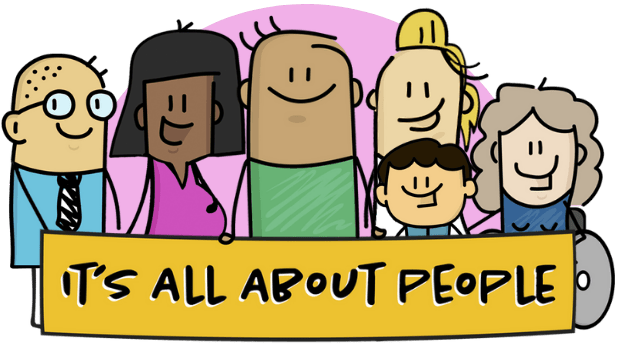Shared Decision-Making
Shared Decision Making (SDM) is a process by which people are supported to understand their options and are given the opportunity to consider relevant information that might influence their choice.
Shared Decision Making is a key component of personalised care. It is an approach that represents the move away from a ‘doctor knows best’ style of healthcare towards a person-centred approach.
This represents a new relationship between people, professionals, and the health and care system. It provides a positive shift in power and decision-making that enables people to feel informed, have a voice, and be connected to each other and their communities
Shared decision-making is a process by which people are supported to:
- Understand the care, treatment, and support options available and the risks, benefits, and consequences of those options
- Make a decision about a preferred course of action based on good quality, evidence-based information, and their personal preferences.
Shared Decision Making should be used in all areas of healthcare. Anyone who has a role in offering people treatments, investigations, therapies, or interventions should have an understanding of Shared Decision Making and use this approach in practice.
A Shared Decision-Making conversation brings together:
- the clinician’s expertise, such as treatment options, evidence, risks and benefits
- what the patient knows best: their preferences, personal circumstances, goals, values and beliefs.
Shared decision-making requires skill from health professionals and most importantly a willingness to involve people in decisions about their own care. Health professionals also need to recognise that patients, particularly those with lower levels of health literacy, may need support to take a more active partnership role with their care professional. To be successful, it relies on two sources of expertise:
- the health professional as an expert on the effectiveness, probable benefits, and potential harms of treatment options
- the person as an expert on themselves, their social circumstances, attitudes to illness and risk, values and preferences.
In any decision where there is more than one option, the values and preferences of the person, such as their attitude to risk, may be as important as the clinical evidence in choosing which option to follow. Shared decision making enables people to align their preferences to treatment options that are clinically valid. It does not mean that people can choose clinical treatments that have no evidence base. Both parties must be willing to share information and accept shared responsibility for joint decision-making. This may only be a subtle change of practice for some, but it could feel like a dramatic one for others and especially for the person involved.
What support is there for me and my team to embed Shared Decision Making?
You can find details for this and more training opportunities in the Learning and Development Section of this website.
Preparing People for a different conversation
If you would like to discuss embedding Shared Decision Making into your service please contact us













